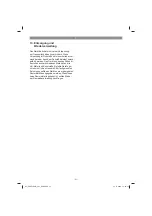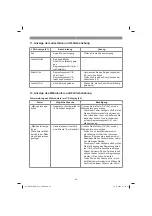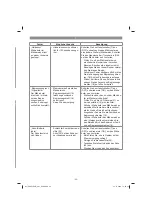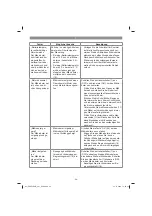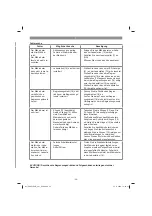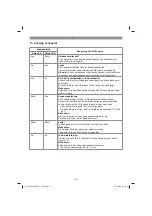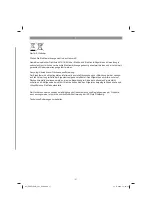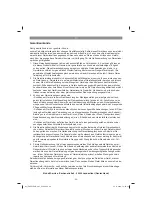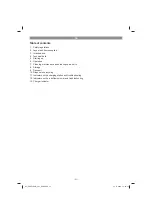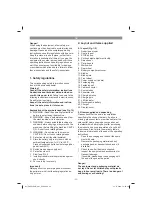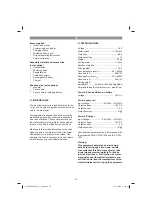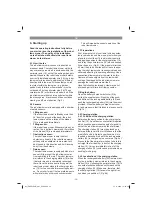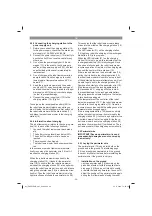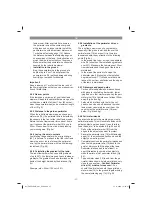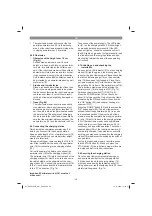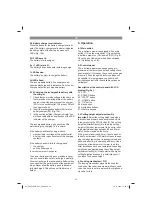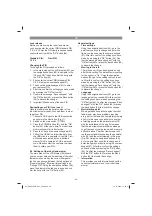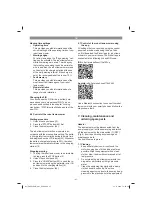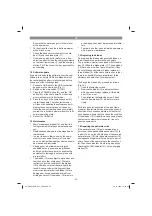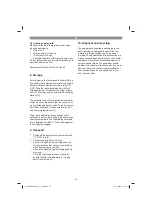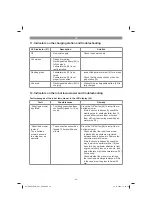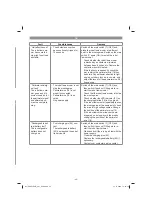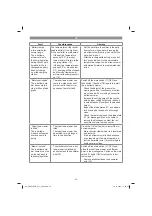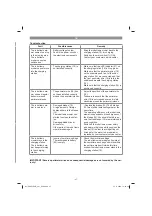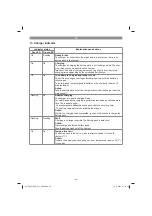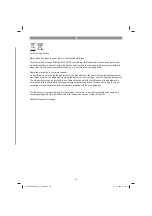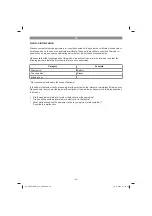
GB
- 35 -
5. Starting up
Read the operating instructions fully before
you start work on the installation of the robot
lawn mower. The quality of the installation
work a
ff
ects how e
ff
ectively the robot lawn
mower works later on.
5.1 How it works
The robot lawn mower chooses its direction on
a random basis. The robot lawn mower works its
way over every area which is enclosed within the
perimeter wire (18), so that the entire garden gets
mowed. Whenever the robot lawn mower detects
a correctly installed perimeter wire (18), the robot
lawn mower turns about and drives in a di
ff
erent
direction within the area. All zones that you wish
to protect within the lawn area – e.g. garden
ponds, trees, furniture or
fl
ower beds – must be
cordoned o
ff
by the perimeter wire (18). The pe-
rimeter wire (18) must form a closed circuit. If the
robot lawn mower bumps into an obstacle within
the mowing area, it reverses and then continues
mowing in a di
ff
erent direction (Fig. 3).
5.2 Sensors
The robot lawn mower is equipped with a number
of safety sensors.
•
Lifting sensor:
If the robot lawn mower is lifted by more than
30° from the ground at the back, the robot
lawn mower and the rotation of the blades
(10) are stopped immediately.
•
Tilting sensor:
If the robot lawn mower tilts severely in any di-
rection, the robot lawn mower and the rotation
of the blades (10) are stopped immediately.
•
Obstruction sensor:
The robot lawn mower is able to detect
obstacles in its path. If the robot lawn mower
collides with an obstacle, its movement will
be stopped in this direction and it will reverse
away from the obstacle.
•
Rain sensor:
The robot lawn mower is equipped with a rain
sensor (5) to prevent the robot lawn mower
from operating in the rain. The robot lawn mo-
wer returns to the charging station (19) when
it detects rain and is completely recharged
there. Once the rain sensor is dry again, the
robot lawn mower stays in the charging stati-
on (19) for two hours before resuming operati-
on. Do not short-circuit the two metal sensors
with metal or any other conductive material.
This will impede the correct operation of the
robot lawn mower.
5.3 Preparations
First, draw a sketch of your lawn. Include obstac-
les in your sketch and draw up a plan for how you
intend to protect them. This will make it easier to
fi
nd a good position for the charging station (19)
and to lay the perimeter wire (18) around bushes,
fl
ower beds, etc. (Fig. 4). If the grass is taller than
60 mm it has to be shortened
fi
rst to avoid expo-
sing the robot lawn mower to excessive load and
adversely a
ff
ecting its operating e
ffi
ciency. Use a
conventional lawn mower or trimmer to do this.
Remove all loose objects from the lawn which
could get damaged by the robot lawn mower or
damage the robot lawn mower itself.
Have the following tools ready: Hammer, pair of
pliers and pair of pliers for stripping cables.
Fitting the battery
Open the battery compartment cover (9) by
pulling the snap fastener. Press the of the push-
lock button of the rechargeable battery (22) and
push the rechargeable battery (22) into the mount
provided. Close the battery compartment cover
(9) and make sure that it latches in place correctly.
(Fig. 10)
5.4 Charging station
5.4.1 Position of the charging station
Determine the best position for the charging sta-
tion
fi
rst (19). An outdoor socket outlet is required
which supplies a permanent supply of electricity
so that the robot lawn mower works at all times.
The charging station (19) must be placed on a
fl
at area at the level of the turf. Make sure that the
area is
fl
at and dry. Select a position which is in
the shade, because it is best if the rechargeable
battery (22) is charged up in a cool area (Fig. 5a).
Also note that the perimeter wire has to be laid in
a straight line for least 2 m in front of the charging
station (19). Curves immediately in front of the
charging station (19) could cause problems when
docking for charging.
5.4.2 Localization of the charging station
When the rechargeable battery (22) is almost em-
pty, the robot lawn mower returns to the charging
station (19) by following the perimeter wire (18) in
a counterclockwise direction until it reaches the
charging station (19). Make sure, therefore, that
the charging station (19) faces in the right direc-
tion when you position it. (Fig. 5b)
Anl_FREELEXO_plus_SPK9.indb 35
Anl_FREELEXO_plus_SPK9.indb 35
14.11.2019 12:52:36
14.11.2019 12:52:36
Содержание 34.139.50
Страница 136: ... 136 Anl_FREELEXO_plus_SPK9 indb 136 Anl_FREELEXO_plus_SPK9 indb 136 14 11 2019 12 52 57 14 11 2019 12 52 57 ...
Страница 137: ... 137 Anl_FREELEXO_plus_SPK9 indb 137 Anl_FREELEXO_plus_SPK9 indb 137 14 11 2019 12 52 58 14 11 2019 12 52 58 ...
Страница 138: ...EH 11 2019 03 Anl_FREELEXO_plus_SPK9 indb 138 Anl_FREELEXO_plus_SPK9 indb 138 14 11 2019 12 52 58 14 11 2019 12 52 58 ...

